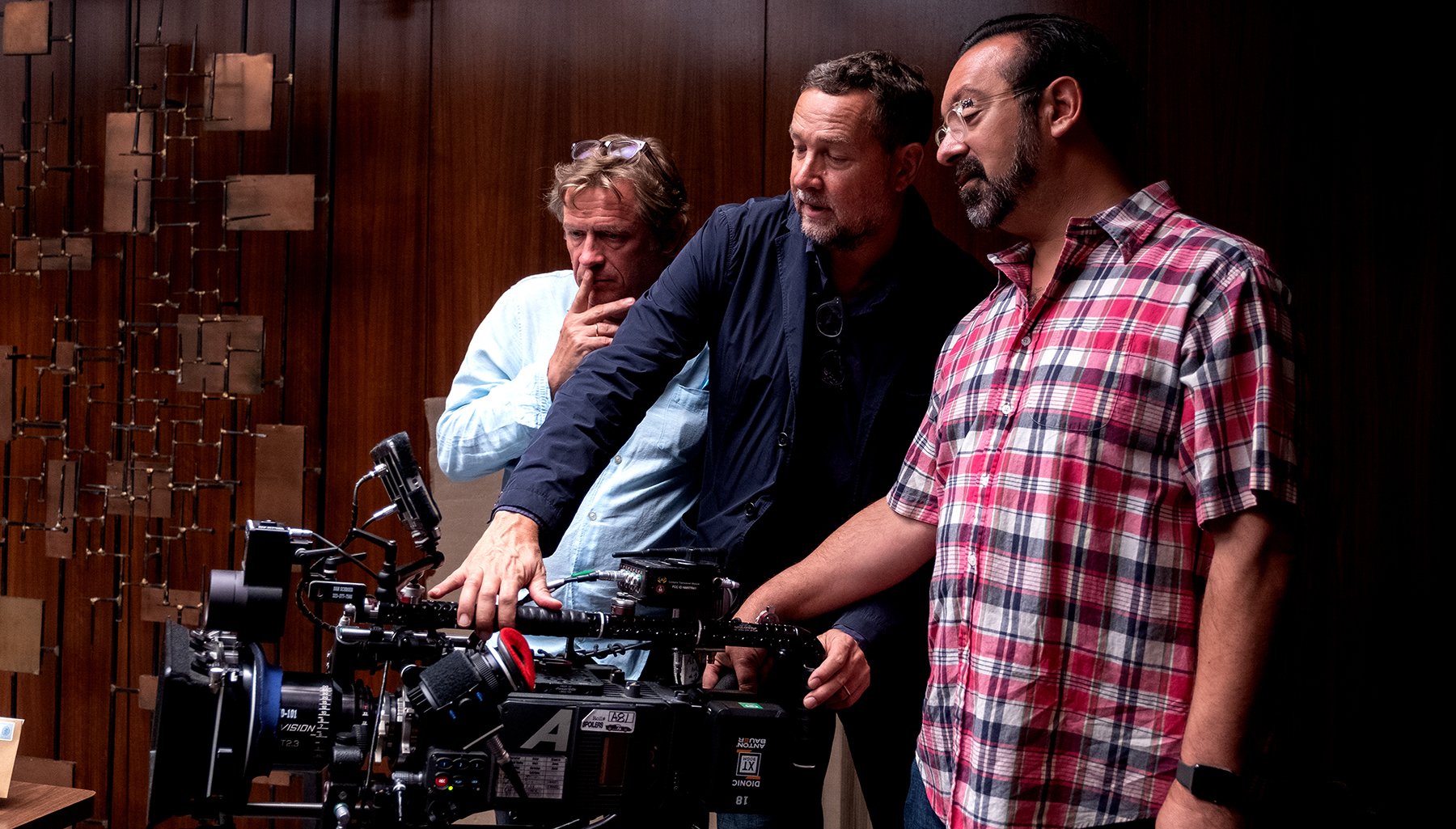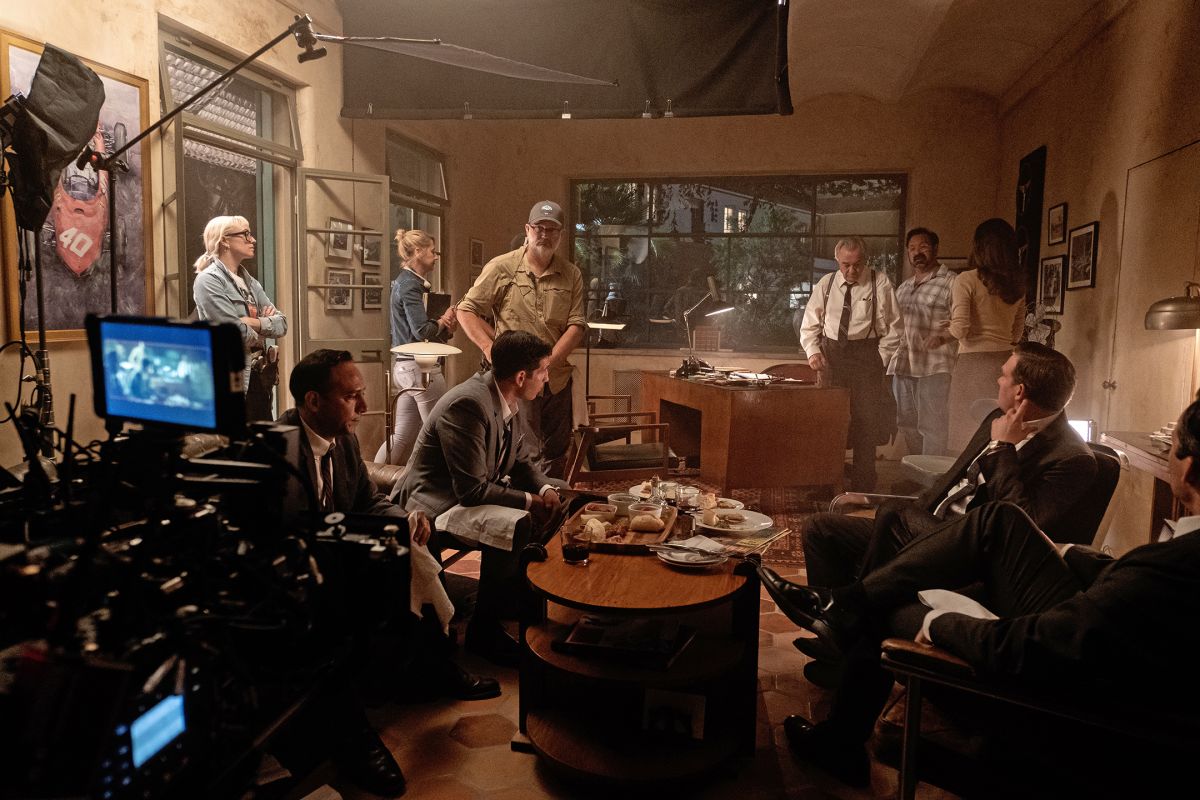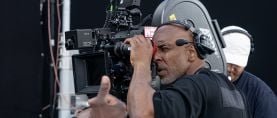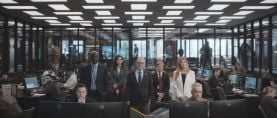
Ford v Ferrari: Inside the Arena with Director James Mangold
Director James Mangold on his visual approach to the project and his longtime collaboration with Phedon Papamichael, ASC, GSC.
The director of Ford v Ferrari discusses his longstanding creative collaboration with cinematographer Phedon Papamichael, ASC, GSC.
Unit photography by Merrick Morton. All images courtesy of 20th Century Fox Film Corp.

American Cinematographer: You made extensive use of the 35mm and 40mm focal lengths, which, given the Alexa LF’s larger sensor, are equivalent to significantly wider lenses in the 35mm format. You’ve employed a wide-lens approach on a number of projects. Why does it work for you?
James Mangold: A long time ago, on Identity, Phedon and I realized that we both like staying with a wider lens and going closer. We both felt instinctually that we lost something with the longer lens. Both of us are still-photographers, and we appreciate the effect of a wide lens, the dimensionality.
To me, the greatest special effect in a movie is photographing human thought — not speech, but an idea behind the eyes that you can actually read off the face. It’s not just sadness or anger, but even a more complex idea that the movie has been constructed to lead to — a man or woman thinking of the child they lost, the last time they faced an adversary, their own shortcomings. When those moments happen in a film, we remember them and revisit them again and again because it’s the one special effect that technology can never beat. Visual effects from 30 years ago can wear thin, but watch a moment of Orson Welles realizing that he spent his whole life the wrong way. These are unforgettable moments of personal internal realization.
Usually, those moments are photographed ‘inside the arena,’ meaning that the lens and the camera have an intimacy with the actor that a long lens can’t give you. I never want to feel like I’m outside, chilly, observational and detached, peering in. If it’s a moment between a couple falling in love, I want to be as close to their faces as they are to each other. When the camera is physically placed just inches from a character, you feel like you are in their personal space. Not only is there a photographic beauty to a close-focus, wider lens, but there’s a quality of proximity that is still astounding to me.

There is a privilege to that intimacy, and that privilege is unique to cinema. I can sit in a theater on Broadway and watch the equivalent of a long-lens shot of a great performance, because I’m sitting 10 rows out. But I cannot get 6 inches from them. They would tell me to get out of their face!
As a director, I’m so interested in being inside that arena, which offers huge challenges to the cinematographer. Directors of photography obviously have all kinds of imperatives to make the actor look attractive and to light the scene well, and focus is so critical when you are that close. Phedon and I are always at the very edge of focus with these lenses because I’m so hungry for that intimacy. When the question is, ‘Where do you want the camera?’ my answer is often, ‘At minimum.’

You and Phedon have now made five features over the course of 16 years — the others being Identity, Walk the Line, 3:10 to Yuma and Knight and Day. What makes your collaboration tick?
The hardest part of making movies is finding great moments, knowing where to look and how to capture them without ruining them by overproducing, rubbing highlighter pens over something that was already glorious. Phedon sees these moments and captures them with subtlety. He understands actors and story. And he’s willing to break the rules when the time is right. There’s a very static scene in Ford v Ferrari in Henry Ford II’s office, where Tracy Letts [the actor portraying Ford] made a decision to sit in a chair, in profile or with his back to every other character in the scene, who were like the planets orbiting around him. It was not something I had considered, but it was a radically brilliant decision, affecting every other choice in the scene. Phedon liked it, which helped give me the courage to go with it. By not looking at anyone, Tracy conserves this inordinate amount of power. When he finally faces Matt Damon, he spends all the capital he’s been reserving for the entire scene in one 45-degree turn of the head. It’s like an explosion. The scene’s emotionally heightened without tears or yelling. It’s a favorite moment of mine in the movie, and I recognize that I wouldn’t have had the courage to shoot it without Phedon’s support and willingness to push against the default settings. The look and the feel of your movie is so much about when and how much you knowingly and confidently break away from the norms.
AC subscribers can log in to read our complete production story with Papamichael about the making of Ford v Ferreri right here.






